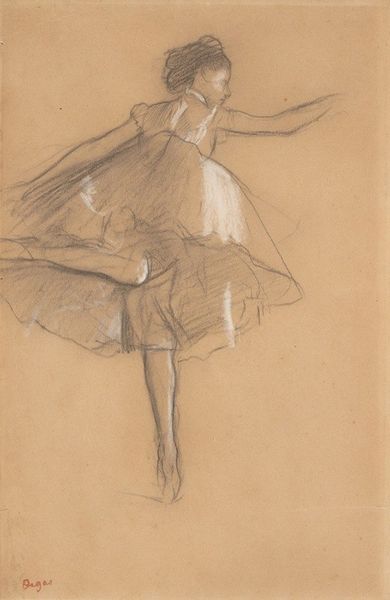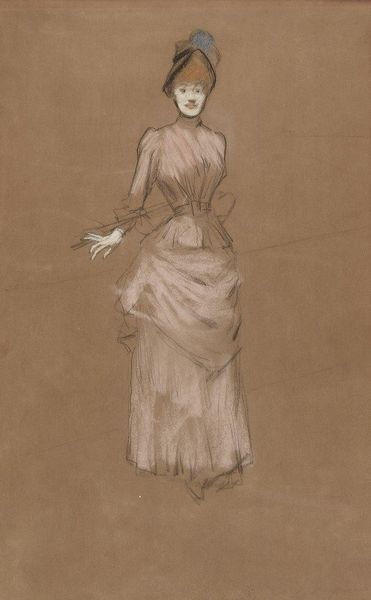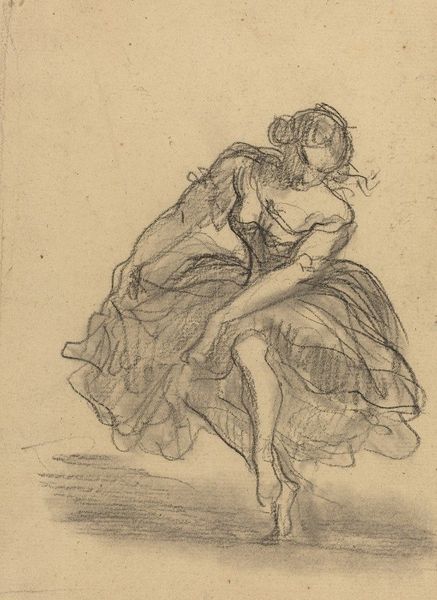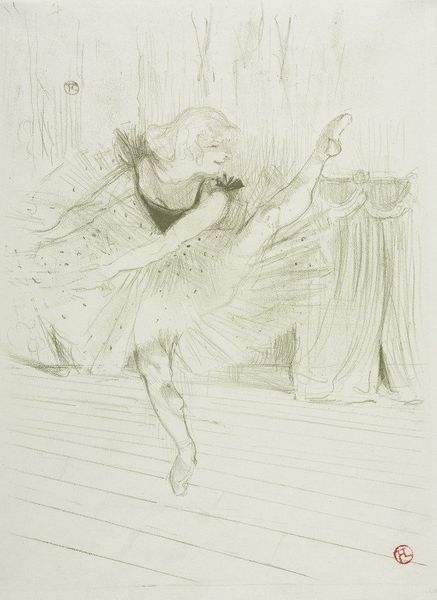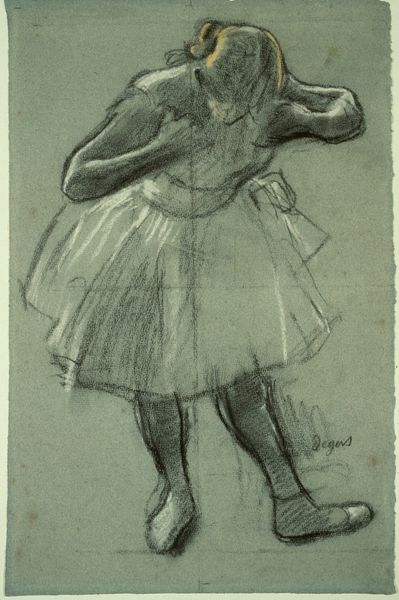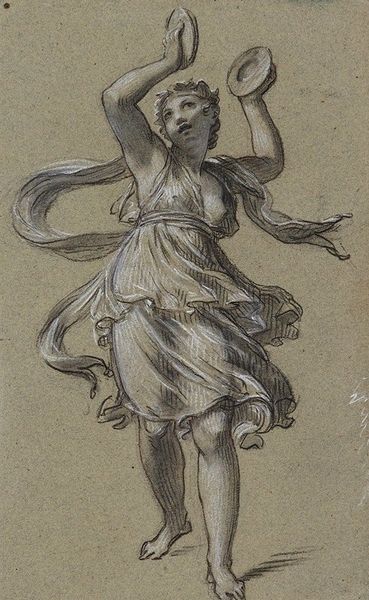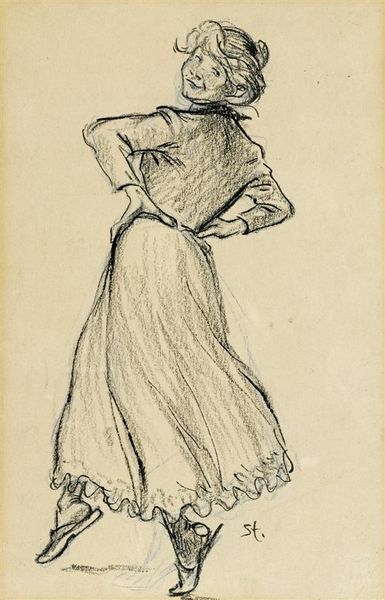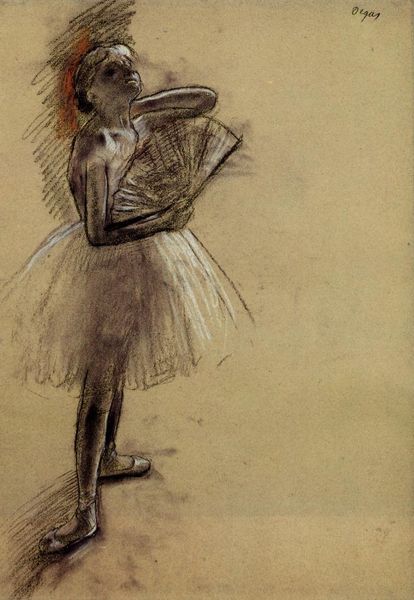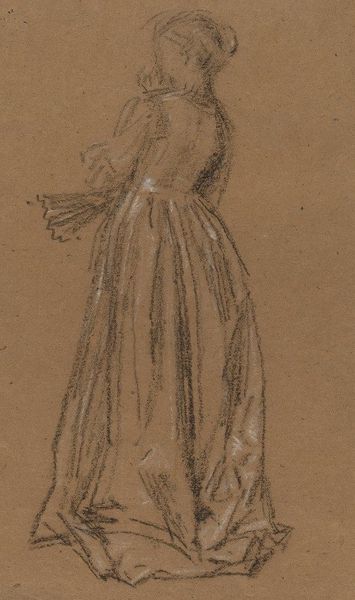
Copyright: Public Domain: Artvee
Curator: Here we have Arthur Bowen Davies' "Woman Dancing", a work rendered around 1900 using colored pencil and pastel. It’s fascinating to consider this piece within the context of Davies' broader engagement with idealized figuration. Editor: My immediate impression is one of delicate grace. The swirling lines of her dress create a sense of movement and the pastel hues lend it a dreamy, ethereal quality. Curator: Absolutely. Davies' romantic inclinations are readily apparent. He often explored themes of beauty and nature, and this drawing aligns with the burgeoning interest in dance that mirrored broader societal shifts concerning the female body and its representation in art at the time. Think about the contemporaneous rise of Isadora Duncan and the cultural weight assigned to dance. Editor: I agree that the influence of Romanticism can be perceived in his choice of light tonalities that, coupled with the simplicity of the lines, evokes lightness and spontaneity. But don't you feel that, despite its undeniable charm, there's an element of constraint? I see an almost academic quality in her pose and her clothing… Curator: Perhaps, but this supposed "constraint," or at least the framework you are suggesting, served a purpose. The elite of the time looked to it as validation of not only the talent and quality of craftsmanship, but as a measure of acceptable moral standards within the cultural elite. Consider the ways his patrons received and perceived idealized, aestheticized figuration. The political underpinnings shaped how the art was circulated and appreciated. Editor: A point well taken. Looking again, I also notice how skillfully Davies has manipulated line and color to suggest form and movement without excessive detail, giving the composition a vibrant immediacy. Curator: Precisely. And that immediacy allowed a viewer to access and identify with that representation of an aesthetic ideal, an important consideration when attempting to position and legitimize dance as a serious subject. Editor: Reflecting upon this composition's dynamic grace versus its slightly constrained pose, and the way its colors add to both characteristics, I now have a broader view of how dance performance served to challenge as much as appease period ideals. Curator: Yes, indeed! It reminds us how complex the dialogue between art, artist, and its public can be, and the fascinating insight artwork like this provides for us to explore such relationships in that light.
Comments
No comments
Be the first to comment and join the conversation on the ultimate creative platform.

